What is an Abandoned Cart?
Why do customers abandon their shopping carts? What are the common and less common reasons for abandoning E-Commerce purchases?
You have already learned this from our article "Common Reasons for Shopping Cart Abandonment in E-Commerce."
This time we will look at ways to deal with this phenomenon – we will address Abandoned Cart Recovery.
Very often, Abandoned Carts have their cause in User Experience, in the poor usability of an online store that needs to be optimized.
If, like us, you're asking yourself – How do you recover an Abandoned Cart? What is Abandoned Cart Recovery all about? Is it a good idea to send a reminder about the Abandoned Cart? – then surely this article will interest you.
We will be pleased if you take another look at the Journal and read what we have to share.
Abandoned Shopping Carts – a quick recap
Let's start with a brief summary for those who, for various reasons, cannot read the article recommended above.
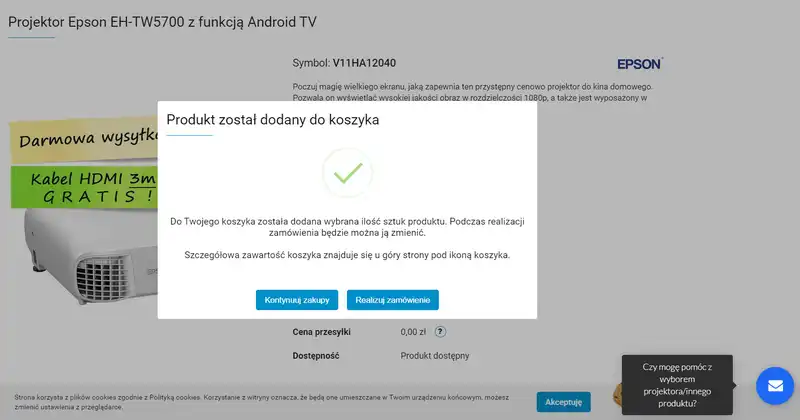
The shopping cart of an online store is not the one we know from stationery stores, although it performs a similar – though not only – function.
The customer uses the shopping cart in an online store to make purchases. It is often used as a handy shopping list (wishlist).
It is used simultaneously to compare selected products, calculate costs, and plan purchases.
Or products in it wait for a special offer sent to the customer's e-mail address with a reminder about the Abandoned Cart.
While Shopping Cart Abandonment in a stationary store is a marginal phenomenon, Abandoned Shopping Carts constitute a significant percentage of typical behaviors in an online store.

The most common reasons for Cart Abandonment in an online store are:
- Unattractive prices, high delivery costs
- Problems with searching and finding the product using the store's search engine
- Illogical shopping path
- High cost of interacting with the store's checkout
- The requirement to register in the store, create a customer account
- Hidden and/or high additional costs (taxes, shipping costs)
- Lack of specification of the total cost of the order in advance
- Long order processing time
- Not enough payment methods
- The long loading time of the home page and category subpages, and product pages
- Low credibility of the store, lack of trust in the guaranteed level of security of transactions
- Errors and technical difficulties occurring on the site
- Lack of access to store support
- All distractors that are particularly important in M-Commerce.
We already know why E-Commerce customers are unwilling to continue and finalize the purchase process.
But is Abandoned Cart Recovery all about eliminating the typical reasons for abandoning a purchase?
Of course, it is. But there is a small – or rather, big – PROBLEM.
The online bying process is not as simple as people might think.
Amy Schade writes about these problems in the article "Decision Making in the Ecommerce Shopping Cart: 4 Tips for Supporting Users"
A researcher affiliated with the Nielsen Norman Group notes, very accurately, that a standard online store is usually designed as a tool that allows the customer to:
- Find a product
- Add a product to the cart
- Make a payment
- Rate products and process an order.
Looking at the problem structurally and procedurally, we can see that such thinking about the purchases in the online store is very limiting.
It boils down the purchase to:
- A linear process in which it is possible to distinguish stages
- A single objective (it assumes that a customer visiting the store has a single goal to which all paths lead)
- making a transaction
- A single functionality of individual elements (e.g., the shopping cart is only meant to serve as a summary of the purchase)
- The flow issue and the structuring of customer actions
- The present effect – we constantly analyze and evaluate customer behavior in the present time, which results in the undesirable short-sightedness of evaluating sales results related to loyalty or conversion.
Myths and wishful thinking have crept into thinking about online shopping.
Finding an effective remedy for the Abandoned Carts is difficult without understanding the actual objectives, actions, reasons, feelings, emotions, and needs.
Let's refer again to Amy Schade. She notes that E-Commerce customers often use shopping carts to make purchasing decisions, calculate, and remember their choices.
They use them as calculators, toolboxes, and repositories with links (e.g., to product specifications). Carts allow them to compare and evaluate. They let customers edit choices and revisit them.
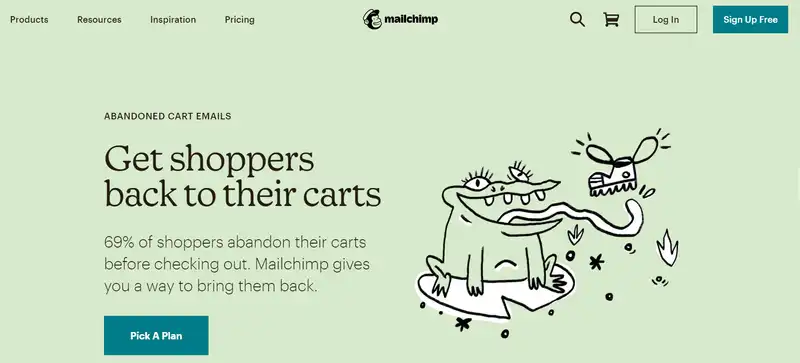
The role of Shopping Carts in the purchasing process and their place in the structure of customer needs and expectations is far from a simple tool that is useful in a very narrow sense.
Shopping carts in E-Commerce are not single-use tools.
They are used in a non-linear way, for various purposes, in tune with the logic that the buyer follows, not the one desired by the online store.
The use of Carts in terms of goals, methods, and time is complex.
And so is thinking about Recovering the Abandoned Cart. We should understand the problem in at least two ways. Namely as:
- Preventive measures
- Optimization activities.
Changing a customer's behavior, first and foremost, requires a change in thinking about the reasons for their behavior. However, we need to introduce a theory before we get into specific design guidelines.
Recovering the Abandoned Cart – BJ Fogg's Behavior Model
The model proposed by Stanford University professor BJ Fogg is extremely helpful and useful in solving the problem of Abandoned Cart Recovery.
Professor Fogg notes that for behavioral change to happen, three elements must occur at the same time:
- Motivation
- Ability
- Prompt
Professor Fogg put the relationship between Behavior and the mentioned factors into a simple formula B=MAP where B stands for Behavior, M for Motivation, A for Ability, and P for Prompt.
And the formula itself reads as follows:
Behavior (B) occurs when Motivation (M), Ability (A), and Prompt (P) meet at the same moment.
Let's take a moment to define the various elements to keep Professor Fogg's model from sounding too baseless.
Motivation refers to the customer's needs, which can arise from feelings (e.g., the desire to feel pleasure or reduce pain), expectations, or belonging (e.g., to specific groups or social classes).
In turn, Ability should be understood as the capability to behave in a certain way. The ability to act in a certain way is not always realized; hence the importance of education, showing customers how they can achieve their goals.
The ease of achieving them is also vital. The more simple, less costly the goal, the greater the Ability.
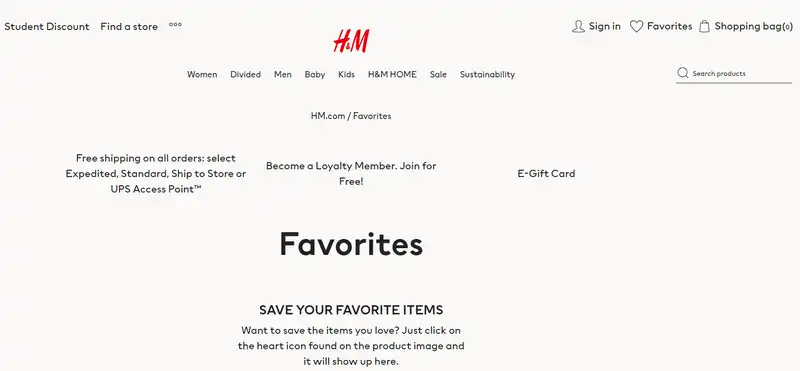
Prompt refers to activities encouraging people to purchase. However, it's not just about the classic Call-To-Action. Fogg understands this element much more broadly.
The Prompt can be instructions on how to make a purchase, but it can also indicate where to make a purchase or highlight how attractive a product is.
A quick, simple, intuitive shopping path is as good a motivator as highlighting the attributes of an offer (such as free delivery or the time-, quantity-limited offer).
How to recover Abandoned Shopping Carts? Recovering the Abandoned Cart by Increasing Motivation
What annoys and demotivates E-Commerce customers the most? We described it in the article "What E-Commerce customers don't like about online stores?".
And in the article "UX of an online store – customer expectations," we discussed most of the current expectations and habits of online store users.
Both articles create a comprehensive map that helps understand the specific "condition" of the E-Commerce customer in particular:
- Their emotions
- Preferences and biases
- Experiences
- Expectations
- Vulnerabilities to certain types of stimuli, situations, results, and processes.
The reasons for Abandoned Carts mostly coincide with the list of disliked elements, solutions, and practices used and applied in online stores.
Hidden costs, long page loading time, and cumbersome, long, error-prone forms are typical causes of irritation and frustration. These are the main "culprits" in terms of lowering purchase motivation.
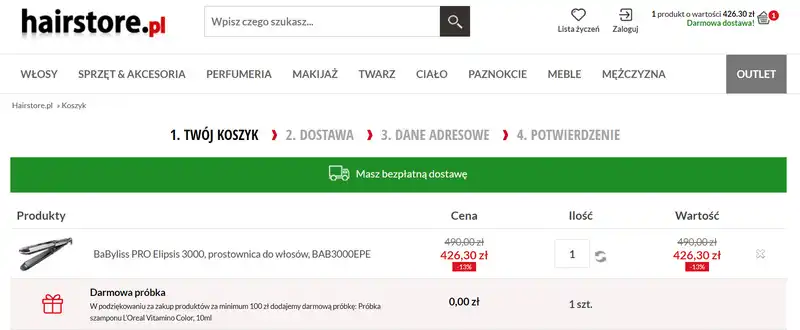
The motivators that drive shopping cart abandonment in an online store include:
- General terms of the offer (in particular, the price of products, but even more so, free delivery, method, and form of delivery)
- Cost transparency
- Timely delivery
- Optimization of place and time of delivery – flexible terms of delivery
- Positive User/Customer Experience.
Payment is also an important motivator. In particular, a wide range of payment gateways and increasingly popular in E-Commerce:
- Deferred payments
- Installment systems (especially if the installment purchase doesn't involve the commission – 0% APRC)
- Depositing funds in the stores' sub-accounts in the form of virtual wallets.
Important motivators in addition to time and payment methods are also:
- The physical availability of the product (also in terms of the number of units)
- The proximity of the product translates into the possibility of a quick personal pick-up in a stationary store or the opportunity to see, test, and get acquainted with the product in a stationary store.
Communication proximity is another motivator that cannot be ignored in optimizing the path to purchase and reducing the Cart Abandonment Rate.
It is also worth noting that a significant strength of Professor Fogg's model is the systemic nature and interdependence of all the factors that influence behavior change.
The Abilities offered to E-Commerce customers are also a motivation to buy.
Recovering the Abandoned Cart, thanks to improved Ability
Immediacy, the speed of purchase (of the purchasing process and order fulfillment), is the strongest, most effective Ability that customers expect in E-Commerce today.
Don't you believe me? So take a look at the research, data, analysis, and discussion conducted by Baymard Institute researchers (44 Cart Abandonment Rate Statistics, Cart & Checkout UX, E-Commerce: Why Customers Abandon Their Shopping Cart and The Average Checkout Flow Has 14.88 Form Fields – Twice as Many as Necessary).
They clearly show that speed, reliability, intuitiveness, comprehensibility of the finalization process of the transaction and the fulfillment of the order (speed and method of delivery) are essential to:
- Combat the Shopping Cart Abandonment phenomenon
- Support the Recovery of the Abandoned Shopping Cart.
Ability should also be understood as an opportunity to make quick purchases in a safe, low-risk way.
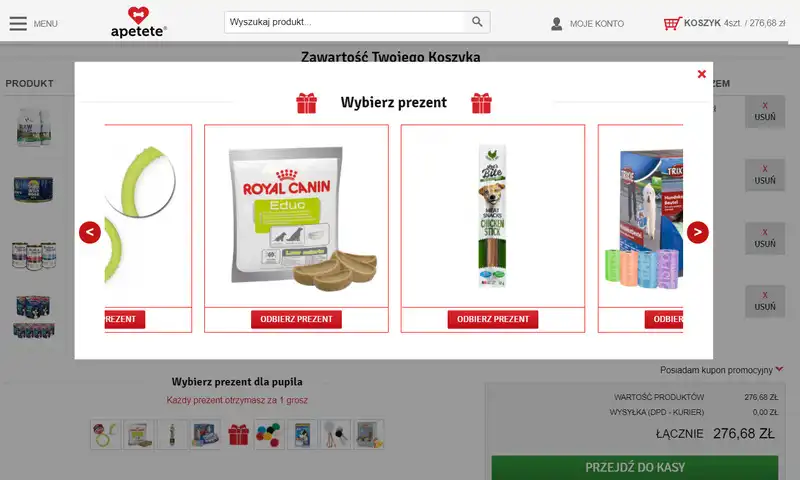
An E-Commerce store that made sure to provide:
- A positive first impression
- SSL certificates
- Reliable rating systems
- Contact through various channels (infoline, chat with a consultant, chatbot, contact form, ordering a phone call – callback service).
Abilities should be understood quite broadly as capabilities related to:
- Offer
- Functionalities
- Communication.
Abilities also include the chance to be up-to-date and continuously informed about:
- New products
- Discounts, promotions, sales
- Availability
- Pre-orders
- Cross-selling
- Limited, special offers.
In summary, Recovering Abandoned Carts is facilitated by creating opportunities to buy in a formula and an offer different from the standard one and in a convenient way that meets the diverse needs of the modern E-Commerce customer.
Namely:
- Financial needs (such as attractive prices)
- Functional needs (speed and safety of the purchase)
- Needs related to the offer (such as the attractiveness of the delivery)
- And emotional needs (security, low risk, seamless process).
Recovering the Abandoned Cart by creating an effective Prompt
Although we cannot stop Cart Abandonment, and it is impossible to create a store free of this phenomenon, it is possible, and even necessary, to lower the Cart Abandonment Rate.
To combat Cart Abandonment, we can offer customers the following:
- A shorter process (we can minimize the number of sub-pages and fields in forms)
- Visualization of the process progress by implementing a progress bar
- Communication of payment methods (such as deferred payment, installment, online, on delivery)
- A wide range of payment methods
- The ability to make a purchase as a guest
- Ensure the appropriate labeling of the consecutive stages of the process, thanks to which the progress and goal are clear and easy to predict
- The option to easily edit an order, use the Back button and continue shopping at any point during the purchase process.
These are Prompts relating to various aspects of the purchasing process: time, work, convenience, savings, simplicity, and control. They provide Prompts expressed indirectly but nevertheless effectively.
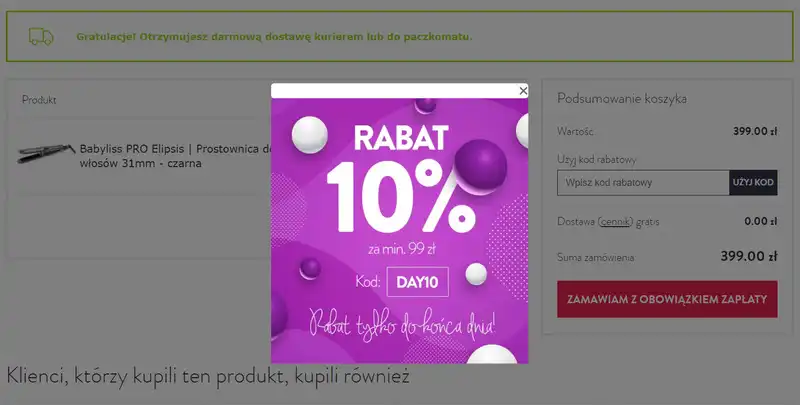
In addition, it's worth supporting the Recovery of the Cart through the following:
- Reminders in the form of e-mails or text messages about the Abandoned Cart, and in the case of M-Commerce, web push notifications are recommended
- Special offers such as a discount or free shipping
- Messages that, in addition to calls-to-action (CTAs), should also include images of the product, a list of its attributes and benefits, and hints about the speed and convenience of purchase
- Active use of popular communicators (such as Facebook Messenger and WhatsApp) as customer communication channels.
Another element that affects the power of the Prompt is proper timing.
A reminder, notification, or text message sent too early or too late can give rise to several undesirable reactions. It is worth remembering that timing, moment, and situation – tactfulness, but not lacking in confidence – is crucial. Why?
Often, wrong timing causes:
- Annoyance when the message is sent too early
- Indifference when the message is sent too late.
In the first case, the unfortunate timing of sending a reminder risks the online store's actions being perceived as intrusive.
In the second case, it may simply be too late. The customer abandons the shopping cart – they may have abandoned the purchase altogether or pushed it back to an undetermined moment.
Or, what is even more common, they simply purchased from the competition.
When it comes to the optimal time for sending reminders, it isn't easy to find a definite recommendation. The time "from Cart Abandonment to a reminder about the Abandoned Cart" can be counted in minutes or hours but not days. The optimal amount of time should always be based on A/B testing, knowledge of the target group, specifics of the product, offer, industry, and market.
When thinking about Recovering Abandoned Carts, Prompts, and timing, it is also worth remembering that there is a time horizon, namely:
- Interest in the purchase
- Relevance of the need
- The attractiveness offer
- Remembering about the best place to buy.
Purchasing needs for cheap and low-value products (monetary and in terms of use), pursued on impulse rather than planned, are forgotten relatively quickly.
More expensive, higher-value products that require a greater purchase commitment tend to be better protected in terms of memory.
We add them to the cart, to the wishlist. We add their product cards to our favorite bookmarks in browsers or send ourselves links to them on instant messaging.
Facilitating these needs and activities can also be an essential Prompt.
The Prompt, encouraging the Recovery of the Abandoned Cart, is the opportunity to purchase in the most preferred channel for the customer, on the most convenient device.
That is why it is essential to offer purchases:
- In online and stationary stores
- On desktop and mobile.
How to recover Abandoned Shopping Carts? Summary
- The shopping cart of an online store has its peculiarities, and its functions and uses overlap to a small extent with the shopping carts known from stationary stores.
- An E-Commerce shopping cart is a multifunctional tool. It can act as a shopping list, a tool for product comparison, and for calculating costs.
- E-Commerce customers use Shopping Carts as calculators, toolboxes, and repositories with links to product specifications.
- The most common reasons for Cart Abandonment include unattractive prices, high delivery costs, illogical shopping paths, and high interaction costs with the store's checkout.
- Many myths and misconceptions have risen around shopping and carts in E-Commerce. One of them is the belief that the shopping process in an online store is simple, linear, and has a single purpose.
- A standard online store is designed to allow customers to find and add a product to their shopping cart, pay, and possibly summarize the product and the order fulfillment in the available rating system.
- Without understanding the actual objectives, actions, reasons, feelings, emotions, and needs, it isn't easy to find an effective remedy for the Abandoned Carts and find an effective way to recover them.
- Shopping carts in E-Commerce are not single-use tools.
- They are used in a non-linear way for various purposes.
- Customers are guided by their purchasing logic, which is usually inadequate to the expected logic of linear purchases.
- The use of Carts in terms of goals, methods, and time is complex.
- Changing a customer's behavior, first and foremost, requires a change in thinking about the reasons for their behavior.
- Professor BJ Fogg's theory is very useful for understanding the problem of Abandoned Carts and offering solutions to facilitate the Recovery of Abandoned Carts.
- According to his model: Behavior occurs when Motivation, Ability, and Prompt meet at the same moment.
- Motivation refers to the customer's needs, which can stem from feelings, expectations, or belonging.
- Ability should be understood as the capability to behave in a certain way.
- Prompt refers to activities designed to motivate online store customers to purchase.
- Proper timing is an element that supports the Recovery of the Abandoned Cart.
- When thinking about Recovering the Abandoned Cart, Prompts, and Timing, it is also worth remembering that there is a time horizon of interest in the purchase, the relevance of the need, the attractiveness of the offer, and remembering about the best place to buy.
- One of the crucial Prompts encouraging the Recovery of the Abandoned Cart is the opportunity to purchase in the most preferred channel for the customer, on the most convenient device.





